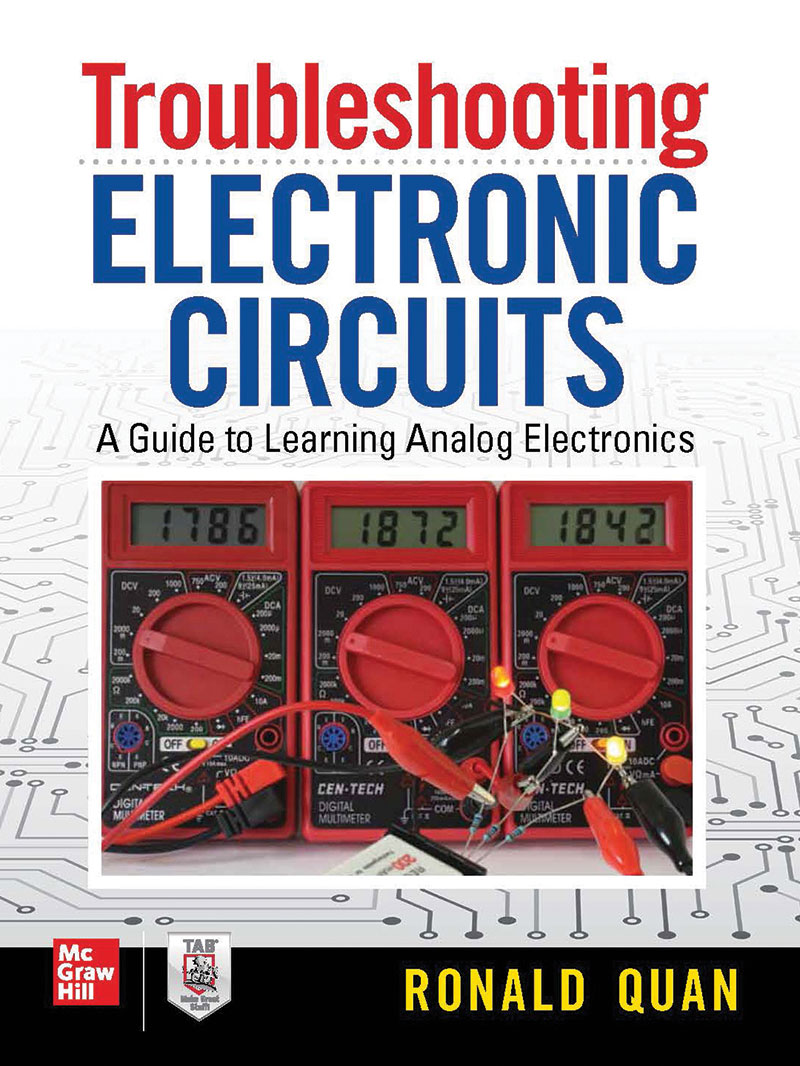Bob Fischer has been an electronics hobbyist, student, technician, engineer, and teacher. For nearly 40 years, his jobs have involved designing, troubleshooting, and repairing electronics apparatus for defense contractors, automated manufacturing plants, chemical plants, and refineries. Electronics is not just his vocation; it’s his passion. He has also been a ham radio operator for well over 50 years. Bob looks at “Troubleshooting Electronic Circuits” from all these perspectives.
The instant I saw Ronald Quan chose to prominently display Cen-Tech volt-ohm-milliammeters on the front cover of Troubleshooting Electronic Circuits, I had a feeling I was going to like the book. I’m sure the author had many more expensive VOMs he could have pictured, but inexpensive “throw away” meters like those Cen-Techs are staples of many seasoned electronics professionals. They are often maligned but more than adequate for most of the troubleshooting we’ll ever do. I saw the cover as an indication that down-to-earth practical advice would follow.

The book did not disappoint. It starts out, appropriately, with brief overviews of breadboards, power supplies, and voltmeters. From there, Quan covers capacitors, resistors, diodes, and transistors. All of them are described with much less theory than usually seen in textbooks but with enough practical information that novice electronics hobbyists should be able to understand how they operate and how to use them in simple circuits.
Naturally, the transistor, amplifier, integrated circuit, and more advanced descriptions do get progressively more complicated. As one should expect, a little math is required to understand those circuits, but Quan gets it done with a minimum amount of simple algebra.
Later chapters deal with audio circuits, timers, PWM motor drives, DIY kits, and ham radio projects.
I did find a wealth of practical troubleshooting information between the covers. I believe the book has about as much material devoted to describing how various circuits operate as it does on how to troubleshoot them. That’s not a bad thing. Knowing what individual circuit elements are supposed to do is key to determining why the circuits are not performing properly.
Quan points out several pitfalls and common mistakes I struggled with as a novice experimenter. Advice such as the reasoning behind designing components to run in the middle of their performance curves and making allowances for manufacturing tolerances should benefit young engineers.
Before starting this review, I took a couple of days to reflect on where the book would have been most beneficial in my electronics career. I think it would have been early, in the hobbyist and student years. However, I certainly don’t want to diminish the fact that Troubleshooting Electronic Circuits contains knowledge I could have used in every stage of my career. Reading it now will make me a better teacher.
There is only one criticism I have with the book. By the time I was midway through the “Light Emitting Diode” chapter (6), I was annoyed that all the photographs were black & white. I wanted to “see” red, yellow, and green LEDs as well as wire colors and resistor color bands. Colors are labelled in photographs, but my brain takes longer to decode the word “red” than it does to process the result of 625 nm radiation on my retinas. NV


